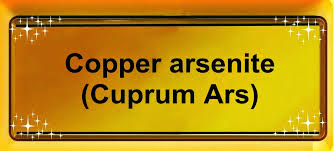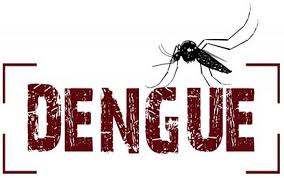Abstract: What is it? The Department of Health and Human Services, United States defines research misconduct as: fabrication, falsification, or plagiarism in proposing, performing, or reviewing research results.
Introduction
|
Fabrication |
Falsification |
Plagiarism |
| Making up results and recording or reporting them | Manipulation of research materials, equipment, or processes, or changing or omitting results such that the research is not accurately represented in the record. | The appropriation of another’s ideas, processes, results, or words without giving proper credit. |
Fabrication
In scientific inquiry and academic research, fabrication is the intentional misrepresentation of research results by making up data, such as that reported in a journal article. As with other forms of scientific misconduct, it is the intent to deceive that marks fabrication as highly unethical and different from scientists deceiving themselves. In some jurisdictions, fabrication may be illegal.
Examples of activities that constitute fabrication include:
· Outright synthesis of experimental data; reporting experiments that were never conducted. Sometimes referred to as “drylabbing“.
· “Fudging”, “massaging”, or outright manufacture of experimental data.
Some forms of unintentional academic incompetence or malpractice can be difficult to distinguish from intentional fabrication. Examples of this include the failure to account for measurement error, or the failure to adequately control experiments for any parameters being measured.
Fabrication can also occur in the context of undergraduate or graduate studies wherein a student fabricates a laboratory or homework assignment. Such cheating, when discovered, is usually handled within the institution, and does not become a scandal within the larger academic community (as cheating by students seldom has any academic significance).
Falsification
Falsification is the practice of omitting or altering research materials, equipment, data, or processes in such a way that the results of the research are no longer accurately reflected in the research record.
Or
Falsification is the changing or omission of research results (data) to support claims, hypotheses, other data, etc. Falsification can include the manipulation of research instrumentation, materials, or processes. Manipulation of images or representations in a manner that distorts the data or “reads too much between the lines” can also be considered falsification.
What is plagiarism?
It is a Latin plagium – means “kidnapping”. It is intellectual theft. It is a serious scientific misconduct
Or
Presenting another’s original thoughts or ideas as your own, using another’s exact words without proper citation
Definition
Plagiarism is the use of others’ published and unpublished ideas or words (or other intellectual property) without attribution or permission, and presenting them as new and original rather than derived from an existing source. The intent and effect of plagiarism is to mislead the reader as to the contributions of the plagiarizer. This applies whether the ideas or words are taken from abstracts, research grant applications, Institutional Review Board applications, or unpublished or published manuscripts in any publication format (print or electronic).
Why do people plagiarize?
· Ignorance
· Lack of knowledge on the ethics of scholarly writing / poor writing skills
· Ambition, fierce competition
· Pressure from seniors
Intentional vs. Unintentional Plagiarism
| Intentional | Unintentional Plagiarism |
| Using minimal or careless paraphrasing | Copying a friend’s work |
| Failing to document or “cite” properly | Buying or borrowing papers |
| Quoting excessively | Cutting and pasting text from sources without giving credit |
| Failing to use your own “voice” to present information or ideas | “Borrowing” media without giving credit |
| Publishing on the web without the permission of the original creators |
The Common Types of Plagiarism
There are different types of plagiarism and all are serious violations of academic honesty. We have defined the most common types below and have provided links to examples.
1) Direct Plagiarism
Direct plagiarism is the word-for-word transcription of a section of someone else’s work, without attribution and without quotation marks. The deliberate plagiarism of someone else’s work is unethical, academically dishonest, and grounds for disciplinary actions, including expulsion.
2) Self Plagiarism
Self-plagiarism occurs when a student submits his or her own previous work, or mixes parts of previous works, without permission from all professors involved. For example, it would be unacceptable to incorporate part of a term paper you wrote in high school into a paper assigned in a college course. Self-plagiarism also applies to submitting the same piece of work for assignments in different classes without previous permission from both professors.
3) Mosaic Plagiarism
Mosaic Plagiarism occurs when a student borrows phrases from a source without using quotation marks, or finds synonyms for the author’s language while keeping to the same general structure and meaning of the original. Sometimes called “patch writing,” this kind of paraphrasing, whether intentional or not, is academically dishonest and punishable – even if you footnote your source!
4) Accidental Plagiarism
Accidental plagiarism occurs when a person neglects to cite their sources, or misquotes their sources, or unintentionally paraphrases a source by using similar words, groups of words, and/or sentence structure without attribution. Students must learn how to cite their sources and to take careful and accurate notes when doing research. Lack of intent does not absolve the student of responsibility for plagiarism. Cases of accidental plagiarism are taken as seriously as any other plagiarism and are subject to the same range of consequences as other types of plagiarism.
The Basics: What is citation?
• A “citation” is the way you tell readers that certain material in your work came from another source.
• It also gives your readers the information necessary to find that source again, including:
– information about the author
– the title of the work
– the name and location of the company that published your copy of the source
– the date your copy was published
– the page numbers of the material you are borrowing
Rules for proper research
In order that study had its purpose and effects, but also justify the intent and invested funds, it must meet certain postulates:
Ø Every scientific research from idea to written scientific article should go through certain phases: the review of the relevant literature on the topic of research, defining the objectives and hypotheses of research, sample selection for the study, implementation of research based on scientific methodological principles, statistical analysis, comparing the obtained own results with results of other authors published in scientific publications, conclusions and specific recommendations for any specific application in practice. Study design and project outline research are usually conducted by experienced researchers as mentors and by own work;
Ø Researchers and authors of scientific papers must follow the rules of the Ethics Code of Good Scientific Practice (GSP), primarily to follow the principles of honesty and integrity;
Ø Researchers rely on published data, and must be trained to selectively process the information, then, must be able to distinguish between original ideas and, finally, to have knowledge in order that their research results are compared with previously published in the scientific literature. In order to achieve and realize the above mentioned:
Ø Authors are required to follow ethical principles and stick to moral and legal regulations acceptable by the scientific community; Authors must properly cite relevant publications and cite facts and conclusions, or published or unpublished ideas and words of other researchers and authors. The reader should be clearly informed of the facts from the original texts of other authors, or of recycled articles from other sources (numerical marking, following Vancouver, the Harvard, APA, Pub-Med and other rules of citation of articles and other sources, for example: 2,9,14,15, etc.);
Ø Authors should properly cite references in their original form (the author(s), article title, abbreviated journal title, year of publication, volume editions, number, initial and final page of the published article, or the other sources in accordance to the order prescribed);
Ø Authors should use the knowledge acquired in the lectures, conferences or other sources of scientific and technical literature, provided that each source must include full bibliographic information;
Ø Authors must each citation in the text indicated in the bibliography at the end of the text and put it in quotation marks copied the contents of which have more than six consecutive words;
Ø Authors must obtain permission from other authors or publishers of scientific reproduction of protected materials (texts, images, charts, graphs, etc.) copyright;
Ø If the author re-used text or attachment as another author’s own observations, then published in the article, in quotation marks, should be accompanied by a quote of recycled text, published in the primary source;
Ø Authors and coauthors must sign a declaration of originality and authorship which provides descriptions of contribution by each of them separately in an article that is going to be published;
Ø Every author of the publication must respect the rules of writing an article in which he/she wants to publish the article, considering that most journals have their own rules, but in line with the principles ICMJE, COPE, etc.
SCIENTOMETRICS
Scientometrics is part of Scientology (the science of science) that analyzes scientific papers and their citations in scientific journals selected sample. The term scientometrics first appeared in the literature in 1969. The original definition of scientometrics is that, it is a scientific discipline or field of science that deals with the study of science as an information process by applying quantitative (statistical) methods, and later Tibor Braun (who is the 1977 formed an international magazine Scientometrics) introduced the world to name Scientometrics. Some of the indicators used in the evaluation of scientific research:
· Impact Factor;
· Citing articles;
· Citing journal;
· The number and order of authors, etc.
Impact factor is the number of citations of articles published in the journal during the previous two years, divided by the total number of articles published in the journal for the same time period. Impact factor depends on: the quality of the journal, the language in which it was printed, the territory covered by the distribution system.
How to avoid plagiarism?
- DON’T copy word for word, or by copying and pasting.
- DON’T print directly (and turn in as your own work).
- DON’T copy from other students.
- DO take notes!
- DO paraphrase!
Conclusion
The importance of dealing with misconduct in medical research cannot be understated. Poor quality and unethical research not only wastes time and money that could be spent on more significant and impactful projects, but faulty research also helps foster a distrust of the medical field, an area where trust is especially important, and can even result in patients receiving harmful treatments.
In order to reduce the amount of poor quality research that is published, including both retracted and un-retracted articles, there needs to be a concerted effort from all involved in the medical field, including researchers, journals and healthcare practitioners.
“The problem of plagiarism is a growing one. The only way that it’s going to be solved, as an ethical problem, is to have a lot more retraining both here and abroad,” Kim Mitchell said. It is only through a broad, concerted effort to reduce unethical research that the pace and quality of good research be increased and the public’s trust in the profession and its advancements be restored. Such efforts will only serve to improve the quality of care for patients and the general health of the public.
References
1) Kagan, Jocelyn, and Susan Victor. “Plagiarism WebQuest.” www.BucciTeacher.com. Mr. Bucci, Web. 18 Feb 2010. .
2) “Plagiarism.” University of West Alabama. Web. 18 Feb 2010. .
3) “Plagiarism – Don’t Do It!.” Marcos de Niza High School Learning Resources and Technology Center. Web. 18 Feb 2010. .
4) “Son of Citation Machine.” Son of Citation Machine. David Warlick & The Landmark Project , Web. 18 Feb 2010. .
5) “Student Guide to Avoiding Plagiarism.” Education World. 2002. Education World, Web. 18 Feb 2010. .
6) “What is plagiarism? (And why you should care!).” School District of Springfield Township. Web. 18 Feb 2010. .
7)
8) Masic I, Kujundzic E. Science Editing in Biomedicine and Humanities. Avicena. Sarajevo, 2013: 11-144.
9) Masic I. Medical publication and scientometrics. J Res Med Sci. 2013 Jun; 18(6): 516-521.
10) http://www.ithenticate.com/
11) https://en.wikipedia.org/wiki/Plagiarism
12) http://www.wame.org/resources/publication-ethics-policies-for-medical journals#plagiarism
13) https://www.bowdoin.edu/studentaffairs/academic-honesty/common-types.shtml
14) https://en.wikipedia.org/wiki/Fabrication_(science).
15) https://www.e-education.psu.edu/bioet533/node/654
16) www.webguru.neu.edu/…/research…research…/falsificationfabrication-data





